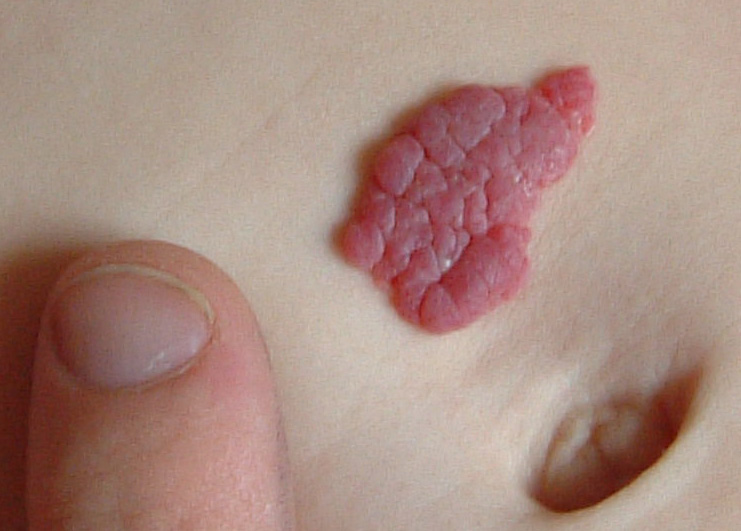Capillary hemangioma: Difference between revisions
(New page: {{Infobox_Disease | Name = Capillary hemangioma | Image = Capillary_haemangioma.jpg| Caption = A small hemangioma of infancy| DiseasesDB = 30032 | I...) |
No edit summary |
||
| Line 27: | Line 27: | ||
|title=Hemangioma Information | |title=Hemangioma Information | ||
|accessdate=2008-08-02 | |accessdate=2008-08-02 | ||
|publisher= | |publisher=Vascular Birthmark Foundation}}</ref> Additionally, low [[birthweight]] infants have a 26% chance of developing a hemangioma.<ref name=add.org/><ref name=vascular_hema/> | ||
While this birthmark may be alarming in appearance, physicians generally counsel that it be left to disappear on its own, unless it is in the way of vision or blocking the nostrils.<ref name=parenting_child_health/> | While this birthmark may be alarming in appearance, physicians generally counsel that it be left to disappear on its own, unless it is in the way of vision or blocking the nostrils.<ref name=parenting_child_health/> | ||
Revision as of 17:50, 7 March 2009
| Capillary hemangioma | |
 | |
|---|---|
| A small hemangioma of infancy | |
| ICD-O: | 9131/0 |
| DiseasesDB | 30032 |
| eMedicine | oph/691 |
| MeSH | D018324 |
A capillary hemangioma (also known as an "Infantile hemangioma," and "Strawberry hemangioma"[1]:593) appears as a raised, red, lumpy area of flesh anywhere on the body, though 83% occur on the head or neck area.[2] The mark usually appears between one and four weeks after birth.[3] It may grow rapidly, before stopping and slowly fading. Some are gone by the age of 2 , about 60% by 5 years, and 90–95% by 9 years.[3]
Capillary hemangiomas occur 5 times more often in female infants than in males, and mostly in Caucasian populations.[4][2] Additionally, low birthweight infants have a 26% chance of developing a hemangioma.[4][2]
While this birthmark may be alarming in appearance, physicians generally counsel that it be left to disappear on its own, unless it is in the way of vision or blocking the nostrils.[3]
See also
References
- ↑ James, William; Berger, Timothy; Elston, Dirk (2005). Andrews' Diseases of the Skin: Clinical Dermatology. (10th ed.). Saunders. ISBN 0721629210.
- ↑ 2.0 2.1 2.2 "Hemangioma Information". Vascular Birthmark Foundation. Retrieved 2008-08-02.
- ↑ 3.0 3.1 3.2 "Birthmarks". Parenting and Child Health website. Retrieved 2008-08-02.
- ↑ 4.0 4.1 "Birthmarks". American Academy of Dermatology. Retrieved 2008-08-02.